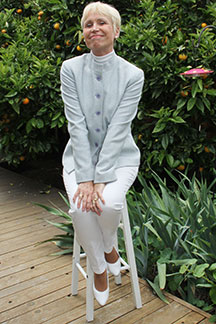During the 1970s and 1980s, Germany remained split into East and West. During that period, as many as 2,000 East German children fell victim to politically motivated forced adoptions. The state took minor children of politically undesirable parents and placed them permanently with regime-compliant families. Most of these children were of elementary school age; some were newborns, taken from their mothers in the hospital. In case of the latter, parents were told that their babies had died shortly after birth. Not until after the collapse of East Germany in 1989 did many of these forced adoption cases come to light.

About 2,000 children in former East Germany fell victim to politically motivated forced adoptions. www.walled-in-berlin.com
Parental “Crimes” and Forced Adoptions
In socialist East Germany, the state expected parents to teach their offspring the principles of communism and the importance of loyalty to the state. To properly instill those values in their children, parents had to be dedicated to the system. If parents spoke out against the regime, or worse, attempted to escape to the West, the state deemed them unqualified to raise children. In that case, authorities withdrew parenting rights and permanently placed the children with approved families.
There were other, far more obscure, reasons that could result in a politically motivated forced adoptions. The Spiegel Online International Newsletter reports several such cases. In one instance, the state put the children of a single mother up for adoption. Out of work, she had chosen to stay home to care for her children rather than continue to work outside the home, as required by East Germany’s compulsory labor laws. When the mother rejected placing her children in the state’s child care, authorities initiated forced adoption. The state told another mother that she would not be allowed to raise two children because her apartment was too small (a larger apartment was not available) and permanently placed one of the children with a regime-approved family.
Responsibility for Forced Adoption
Forced Adoptions were the responsibility of the East German Ministry of Education. Margot Honecker headed the Ministry of Education from 1963 to 1989. She was the wife of former East German head of state, Erich Honecker. Mrs. Honecker, whose agency created the forced adoption policies, allegedly also enforced them. However, allegations were never proven. Following German reunification in 1990, Mrs. Honecker left Germany and moved to Chile where she lived in exile for the rest of her life, collecting a German state pension. She was never charged and died in 2016.
Thirty Years Later
Thirty years after the fall of the Berlin Wall, many families, separated by forced adoptions, are still in search of each other. Reunions are difficult because adoption records are often hard to trace or are missing altogether. On top of that, unified Germany’s Child Protective Services cannot release names and addresses for 50 years because of data protection laws. In the meantime, some victims have formed their own search organizations and websites to help children and parents reconnect. So far, at least 600 families have been reunited.
Reunions of Forced Adoption Victims
Unfortunately, not all reunions of forced adoption victims have ended happily. Many of the children were never told that they were adopted. Others had long forgotten what their natural parents looked like because photographs were confiscated at the time of adoption. When a natural parent knocked on the door, the children – by now adults – were often unprepared to handle the revelation and cut all contact with natural and adoptive parents. While expectations run high, reality often proves disappointing. Grief and sorrow remain.
For a sneak peek at the first 20+ pages of my memoir, Walled-In: A West Berlin Girl’s Journey to Freedom, click “Download a free excerpt” on my home page and feel free to follow my blog about anything German: historic or current events, people, places or food.
Walled-In is my story of growing up in Berlin during the Cold War. Juxtaposing the events that engulfed Berlin during the Berlin Blockade, the Berlin Airlift, the Berlin Wall and Kennedy’s Berlin visit with the struggle against my equally insurmountable parental walls, Walled-In is about freedom vs. conformity, conflict vs. harmony, domination vs. submission, loyalty vs. betrayal.

















